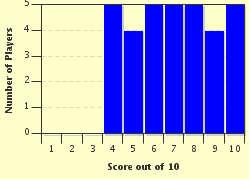Quiz Answer Key and Fun Facts
1. Which of the following groups is given credit by most historians for the building of the Great Zimbabwe?
2. About what time period was the Great Zimbabwe built? When construction began, the Vikings were discovering Vinland.
3. What method was used to construct the Great Zimbabwe?
4. Archaeologists mostly agree that the Great Zimbabwe served on a day-to-day basis as which type of structure?
5. Which great artifacts, that became one of the national symbols for Zimbabwe, were found in the excavation of the Great Zimbabwe?
6. The Great Zimbabwe was an important trading center. What was the main resource the people there used for trade?
7. Archaeological evidence has shown that the Great Zimbabwe was an international trading center.
8. According to legend, which famous biblical figure built the Great Zimbabwe?
9. The Great Zimbabwe is not the only site of stone ruins on the Zimbabwe Plateau. What are these stone ruins typically called?
10. The Great Zimbabwe was named for the country of Zimbabwe.
Source: Author
ponycargirl
This quiz was reviewed by FunTrivia editor
bloomsby before going online.
Any errors found in FunTrivia content are routinely corrected through our feedback system.

